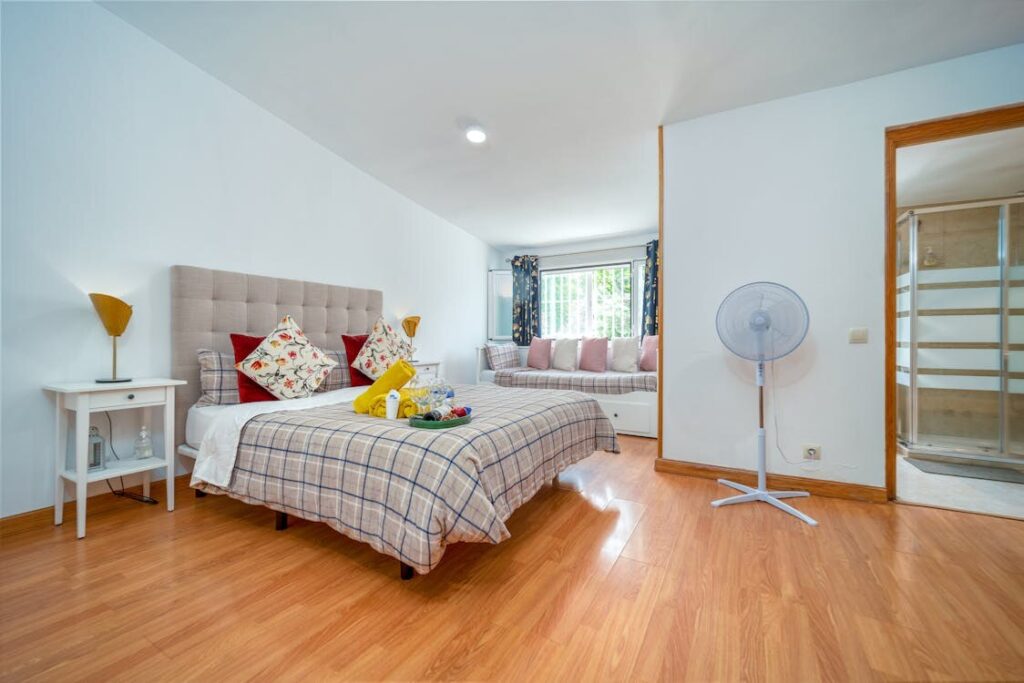A room’s mood can change depending on a few small details. Colours, furniture, and placement all play a role. These details may seem minor, but they shape how a space feels together.
Lighting is another part of the puzzle that people often overlook. Changing a bulb, opening a curtain, or using a blind can shift a room’s feeling without much effort. Among all these, window coverings are one of the easiest ways to control light and mood.
Controlling Natural Light Sets the Mood
Natural light shapes how a space looks and feels. Too much brightness can make a room feel uncomfortable or harsh. On the other hand, low light, depending on the setting, can create a sense of calm or even sleepiness.
Across the United States, many people rely on layered window coverings to adjust lighting throughout the day. Thick curtains and sheer panels are often used to balance brightness and privacy. In the United Kingdom, traditional homes commonly use heavy drapes, helping rooms feel snug while blocking out light when needed.
Australian homes, like Newcastle, Sydney, etc., use simpler options like roller blinds. These offer a clean look and allow easy light adjustment without bulky fixtures. The roller blinds newcastle or other places in Australia have to offer are practical for sunny days, letting homeowners reduce glare while letting soft light through.
These types of blinds also suit different types of rooms. People use them in kitchens to reduce heat and in bedrooms to make the space feel restful. How they shift the light makes them an easy, effective choice when adjusting a room’s mood.
Colour and Material Matter
Different materials and colours can change a room’s feelings, even if the setup stays the same. Pale shades such as white, light grey, or cream help reflect sunlight and make small rooms feel larger. In contrast, darker tones can bring a feeling of calm, especially in areas where people relax or sleep.
The type of fabric also matters. Thin and airy fabrics make a space feel open, while thick or textured fabrics help reduce noise and give a room a more private atmosphere. Choosing a soft linen might make a lounge feel casual, while heavy velvet can turn a reading corner into a more personal space.
It’s worth noting that material can also influence temperature. Light materials often help keep a room cool, while heavier ones add insulation during colder seasons. That’s another way window coverings support comfort and mood.
Match the Mood to the Room’s Purpose
Each room in a home serves a purpose, and window coverings can help support that function. Blackout curtains or thick blinds can make bedrooms more restful by blocking out early light. These are especially useful for shift workers or light sleepers who need complete darkness.
Meanwhile, the kitchen or home office often benefits from brighter settings. Letting in more daylight can make these rooms feel more active and productive. Adjustable blinds or lighter curtains work well in such spaces, allowing more flexibility with the amount of light.
It also helps to think about how often a space is used. Rooms where people spend time during the day, such as dining rooms or play areas, may need coverings that allow steady light without creating glare. When the right window covering supports both the mood and the activity, the room becomes more inviting.
Layering Gives You More Control
Combining different types of window coverings adds depth and flexibility to a room. A sheer curtain can soften direct sunlight during the day, while a heavier curtain or roller blind can block it out when needed. This method gives more control without needing to change the entire setup.
This approach is also helpful when managing privacy. Sheers can be left closed to maintain some cover while still letting in daylight. When privacy is a bigger concern, thicker layers can be drawn without losing the option to adjust later.
Layering isn’t just practical and improves the room’s overall look. The visual contrast between different fabrics and styles adds interest. More importantly, it lets you quickly shift a room’s mood with little effort.
Practical Tips for Choosing the Right Window Covering
Picking the right window covering involves more than choosing what looks nice — finding what works best for your space, light, and lifestyle.
Consider the Direction of Natural Light
Before picking a window covering, look at how much natural light the room receives and which direction it comes from. South-facing windows usually bring in strong, steady light throughout the day. East-facing ones are bright in the morning while west-facing windows can cause glare in the afternoon. Knowing this helps you choose the right material and thickness.
Choose the Right Fabric and Colour
Fabric choice affects both light control and how the room feels. Lighter fabrics like cotton or linen keep things bright and fresh, which works well in living rooms or kitchens. Darker or heavier materials help create a warmer, cosier feel, which suits bedrooms or snug areas. Colours also play a part — soft tones open space, while deep shades make it feel grounded and relaxed.
Think About Function and Ease of Use
Some window coverings are easier to manage than others. If you adjust them often, simple designs like roller blinds or pull cords make daily use more practical. Also, think about how easy they are to clean, especially in kitchens where dust and grease can build up. A good window covering should work with your routine, not against it.
Let the Light Work for You
Lighting quietly shapes a space’s feel. Window coverings make it easier to direct light in a way that fits your needs. They’re a small part of the room that can make a big difference.
When a room doesn’t feel quite right, adjusting the light and choosing the right window covering might be all that’s needed.

